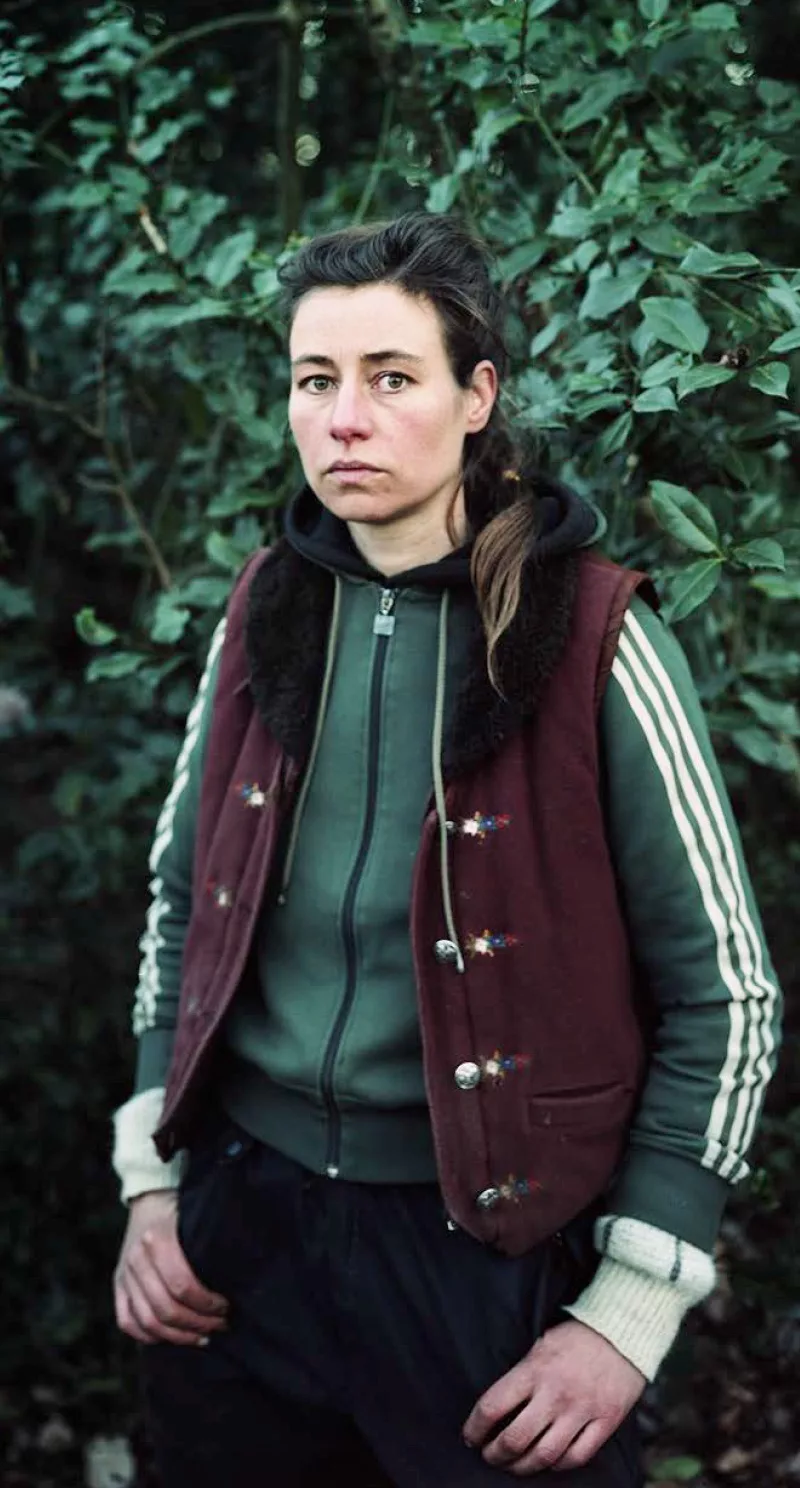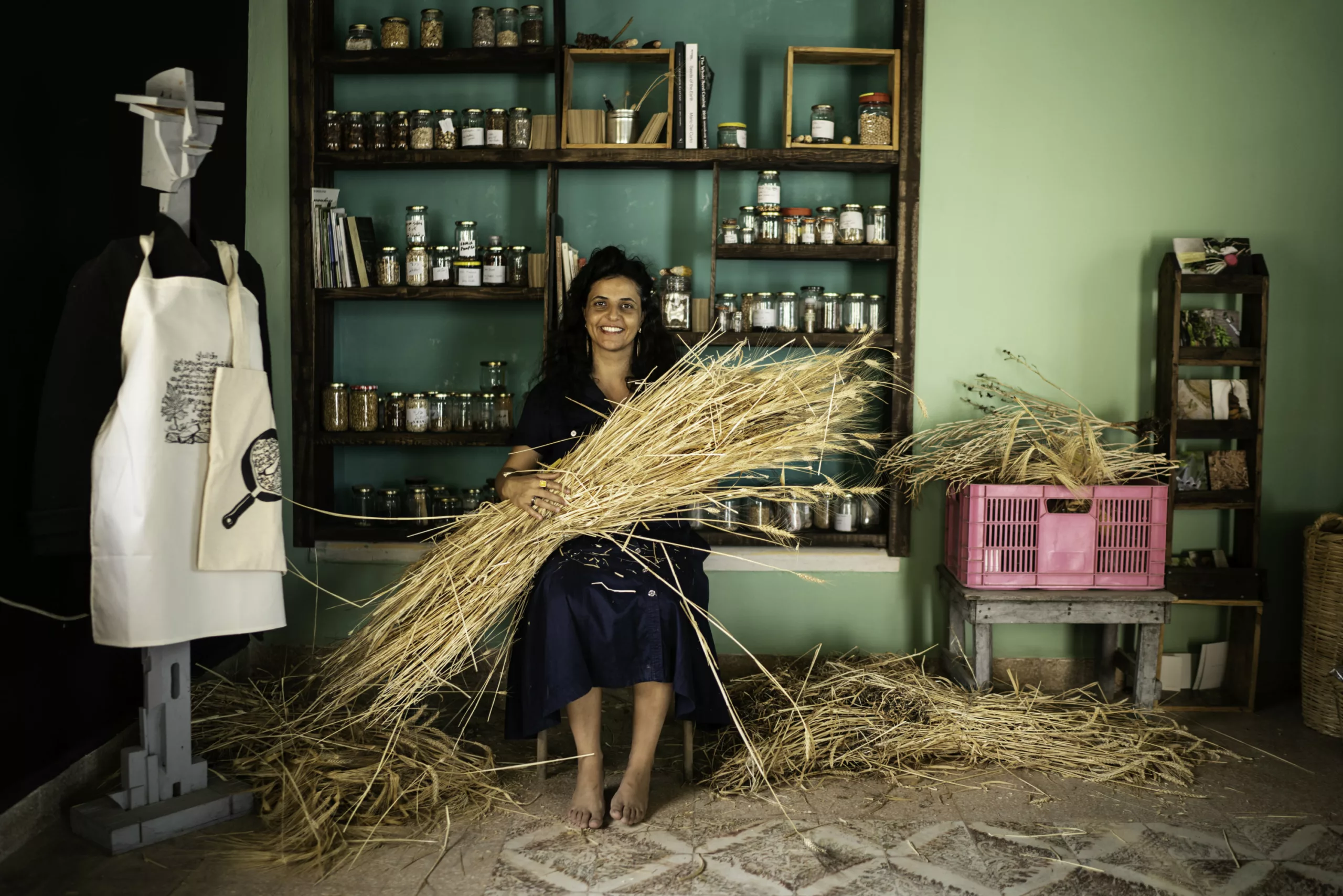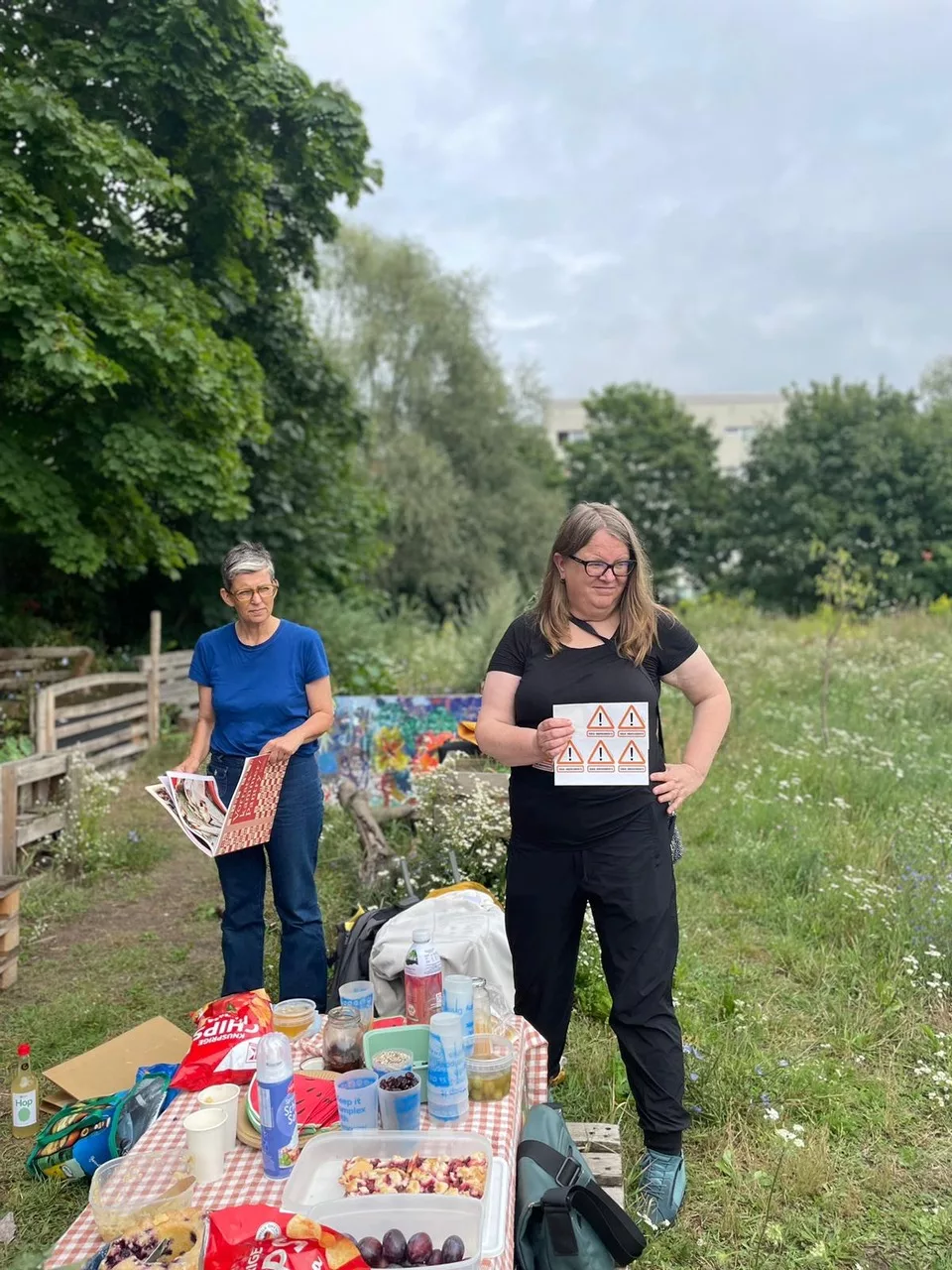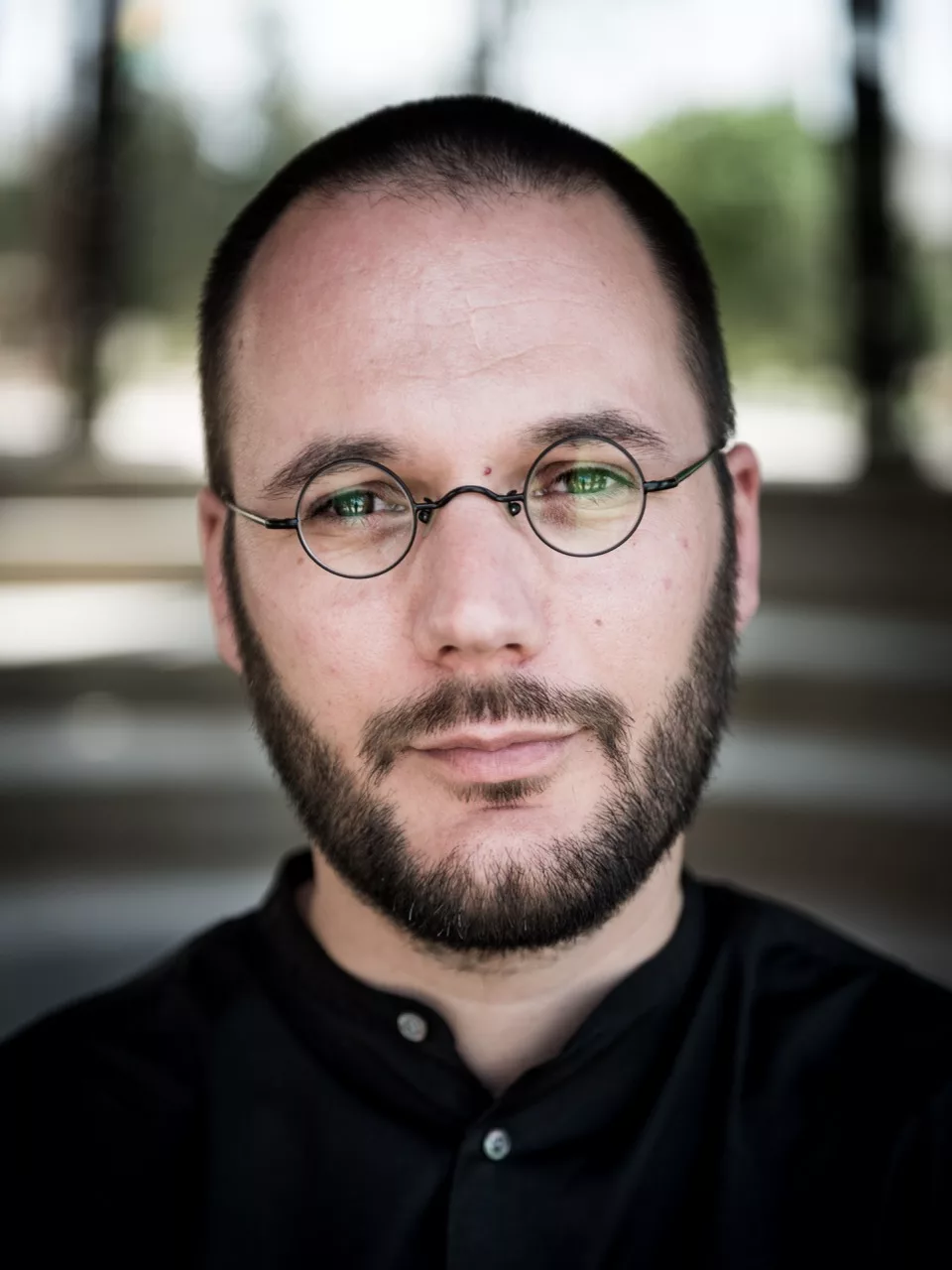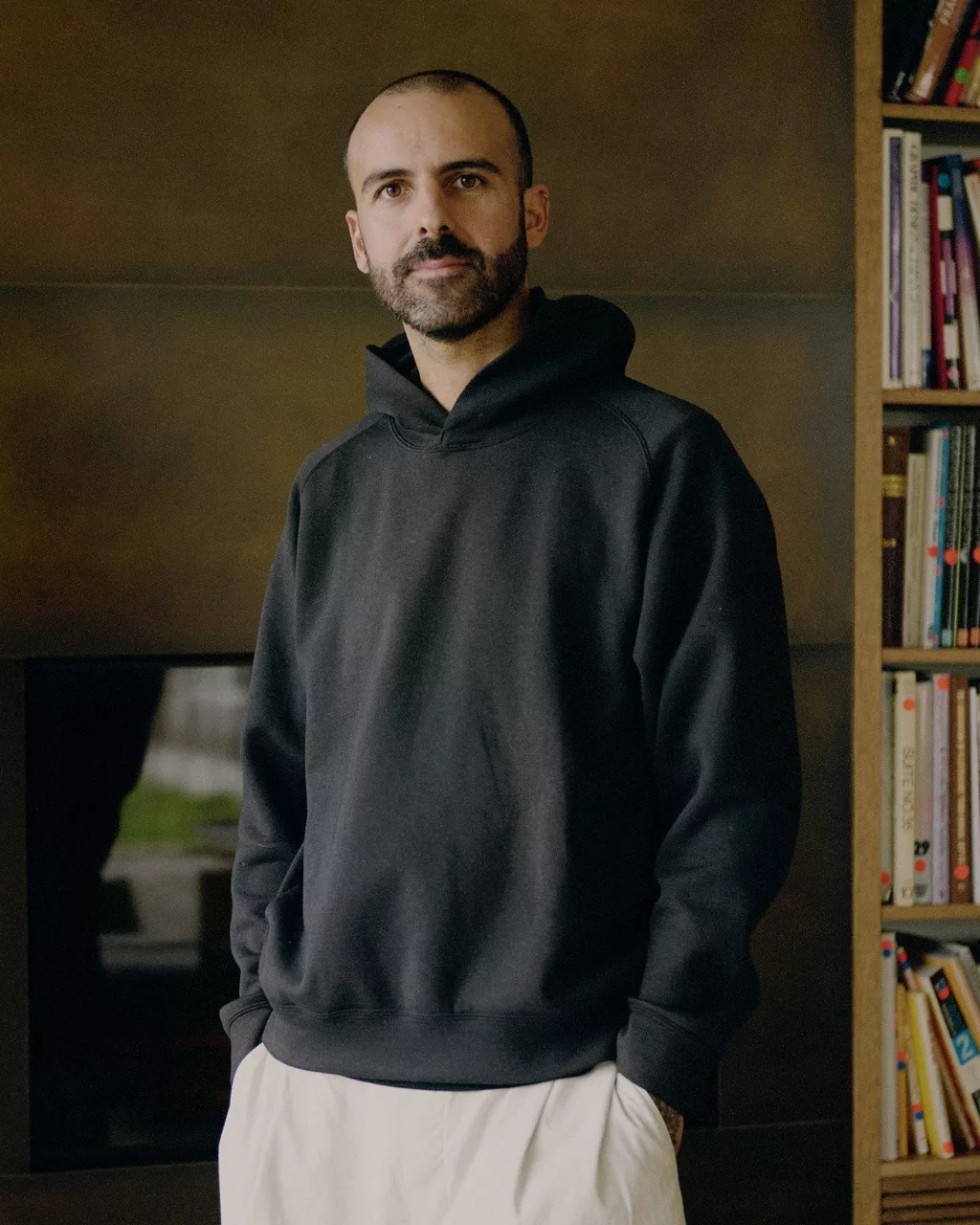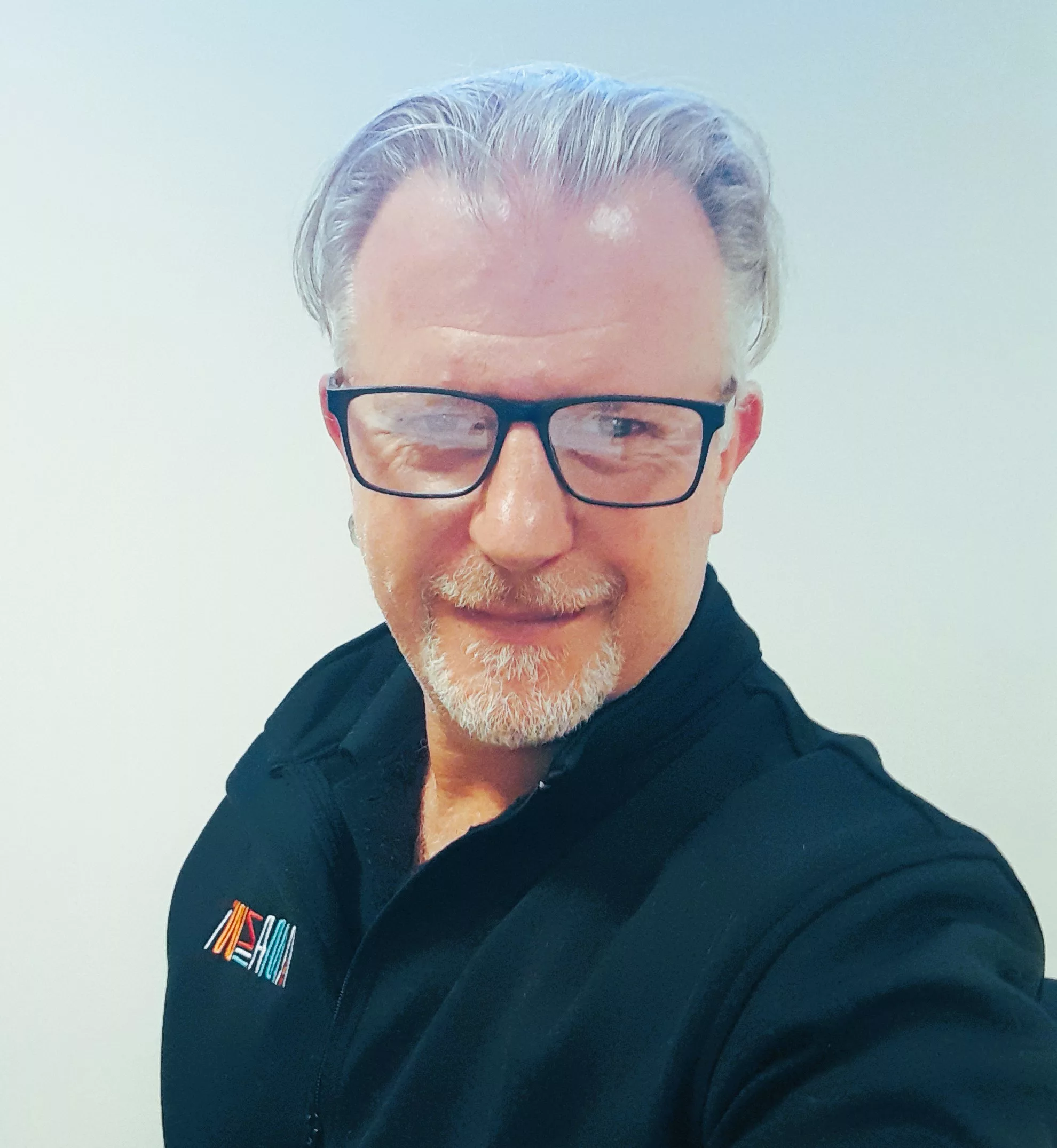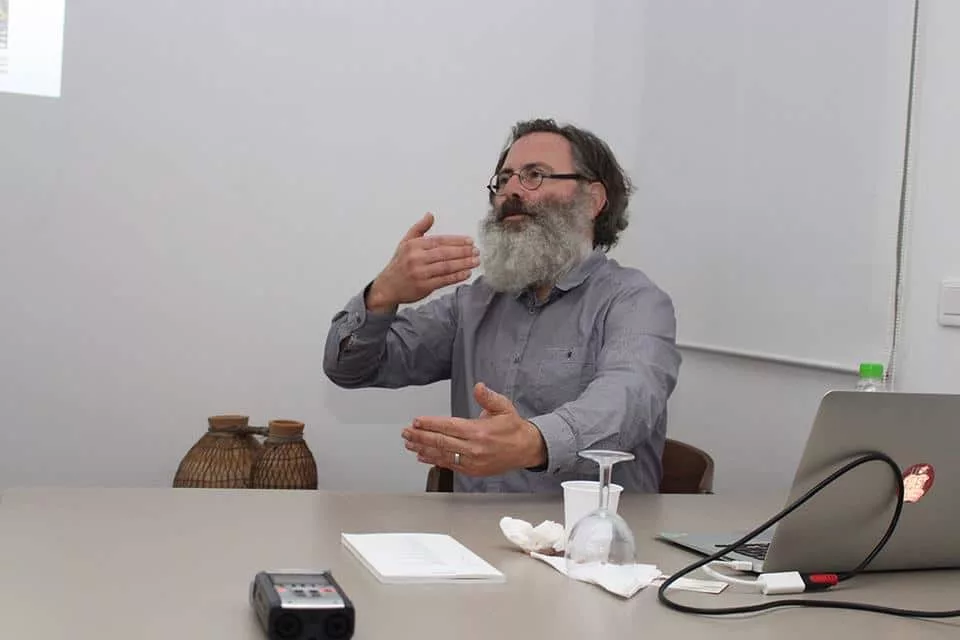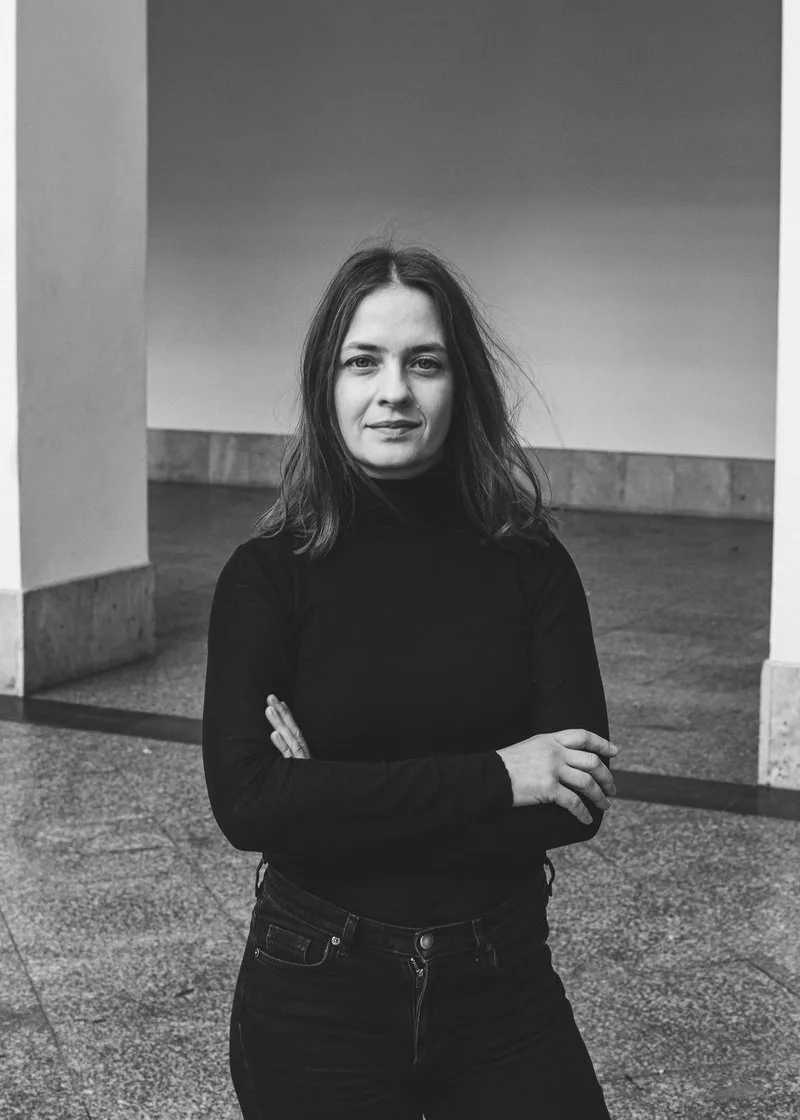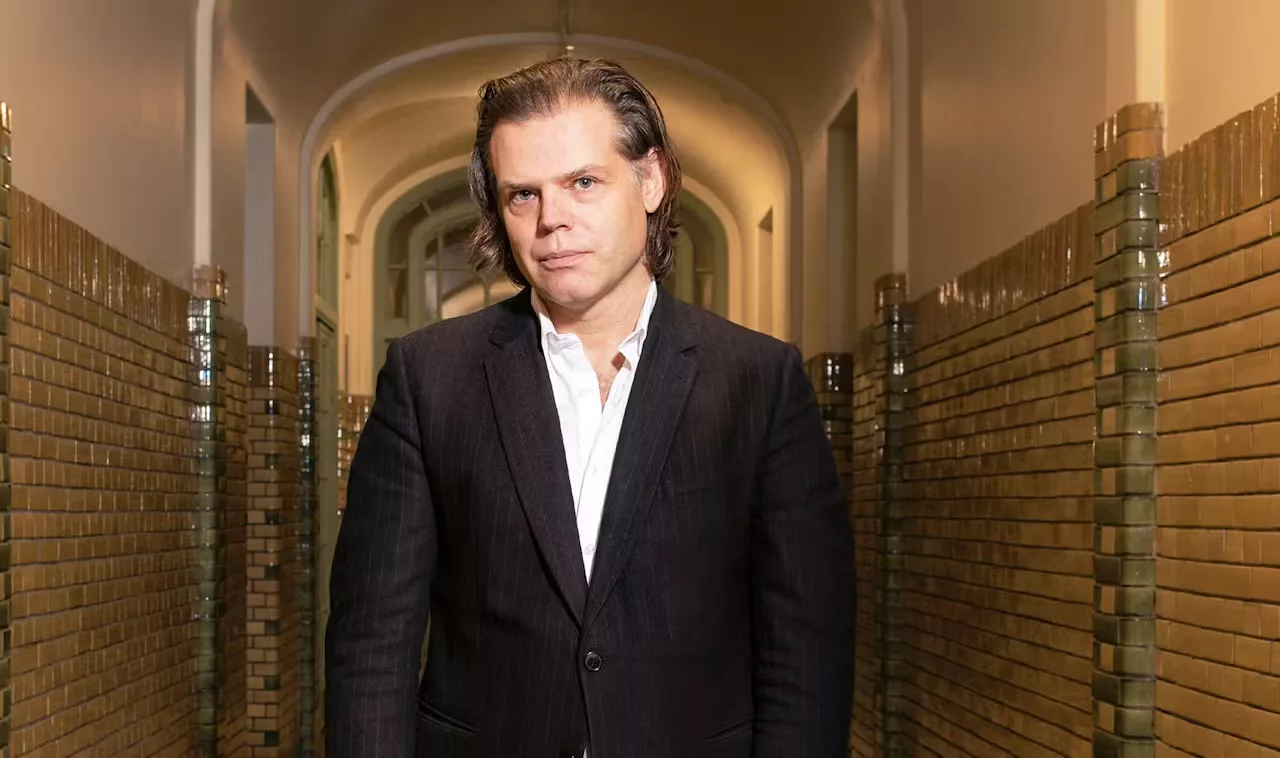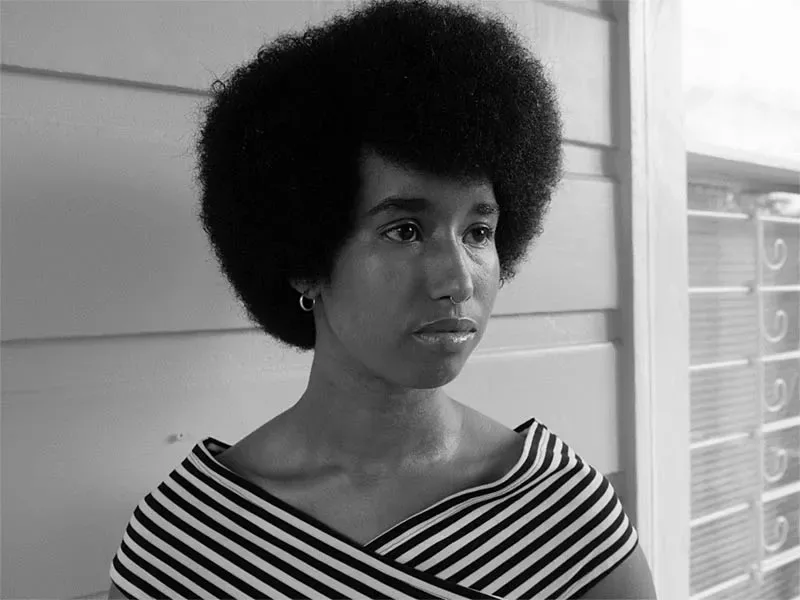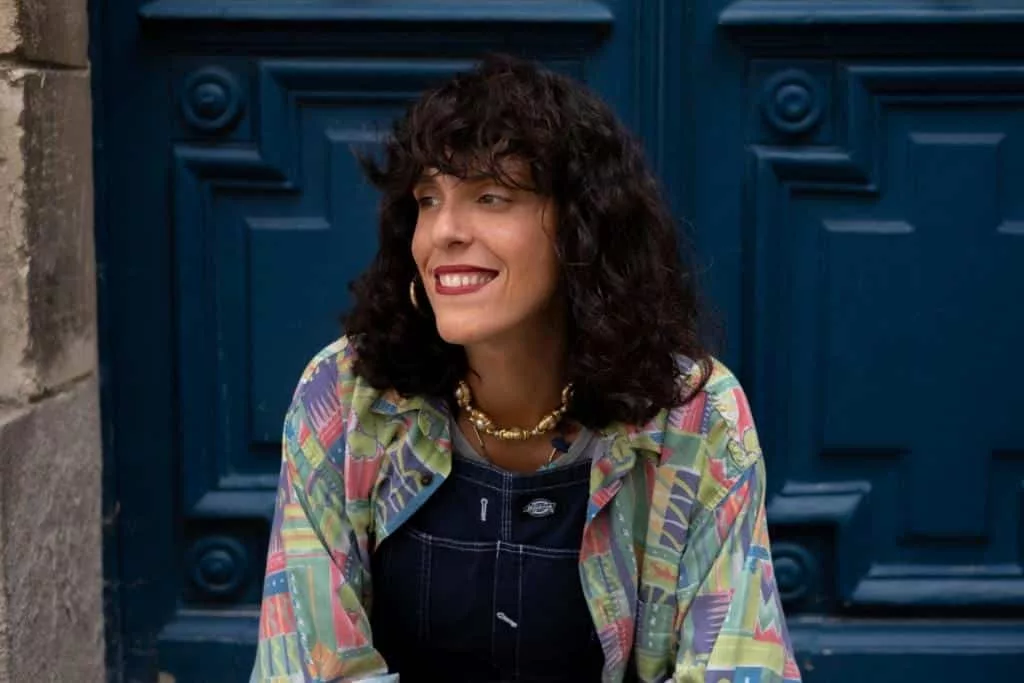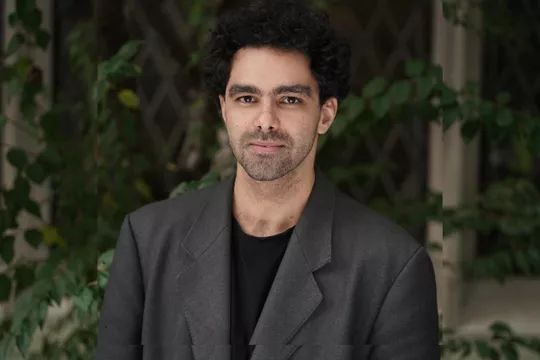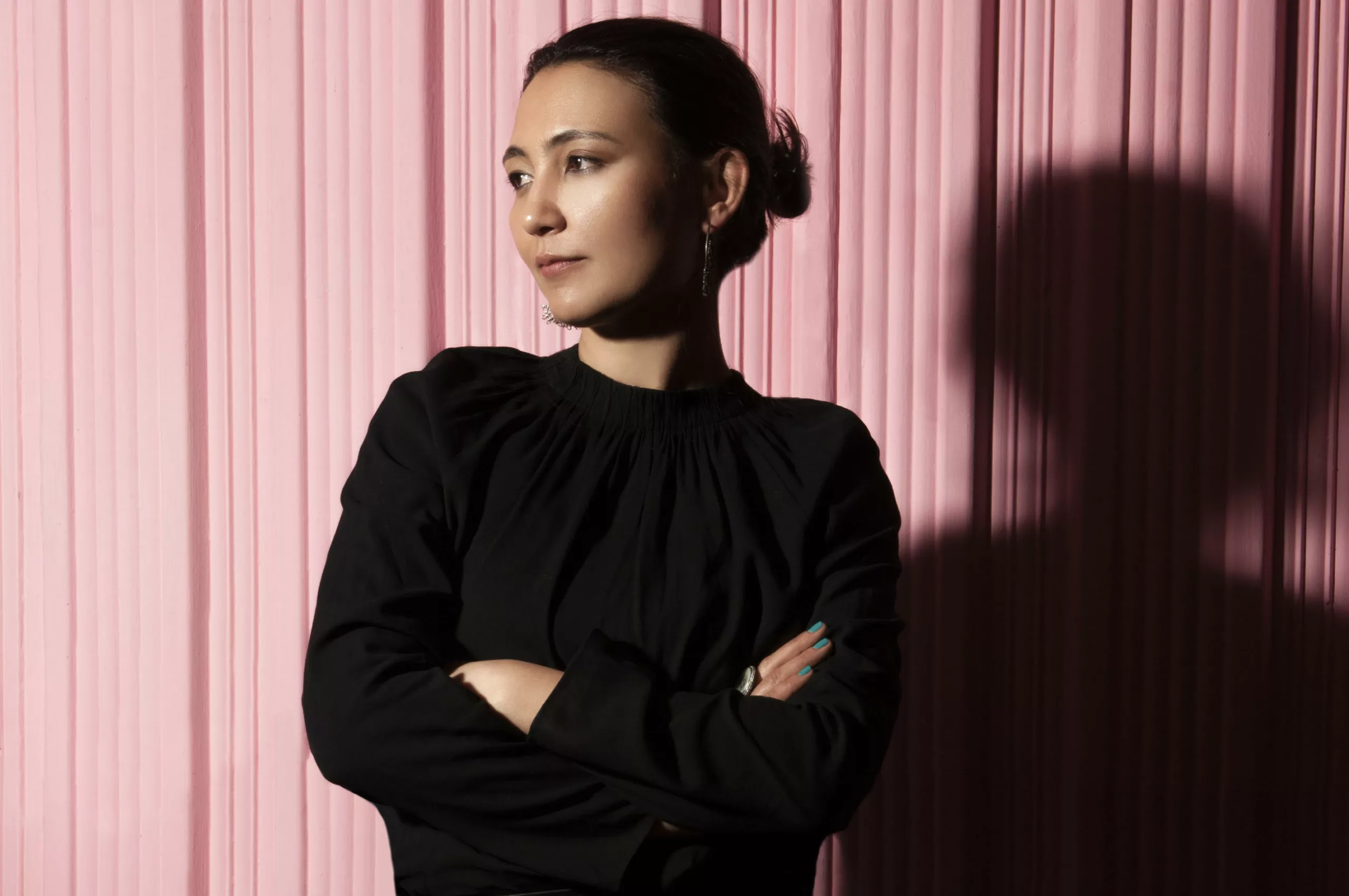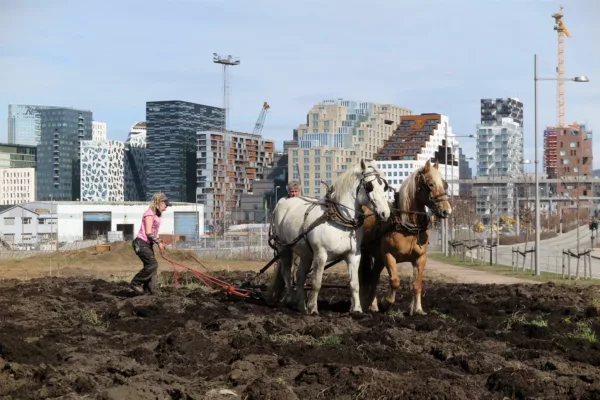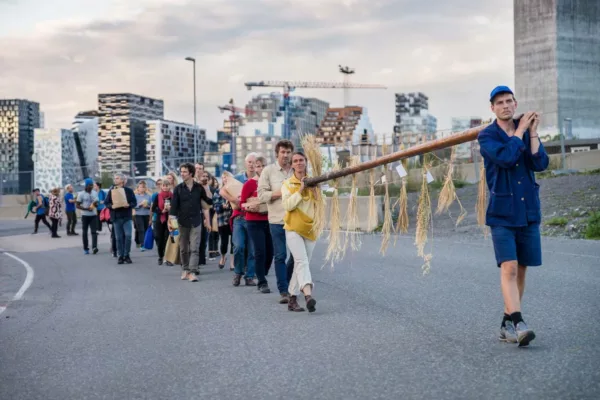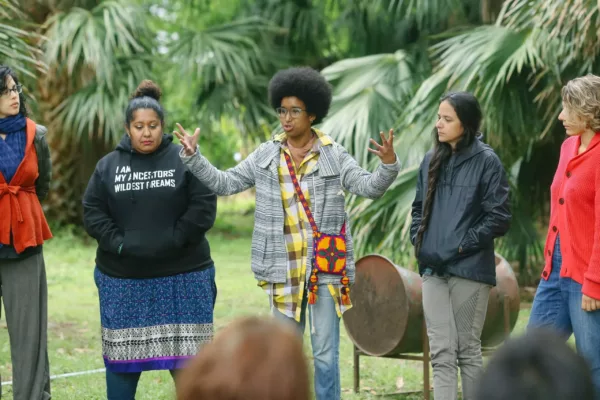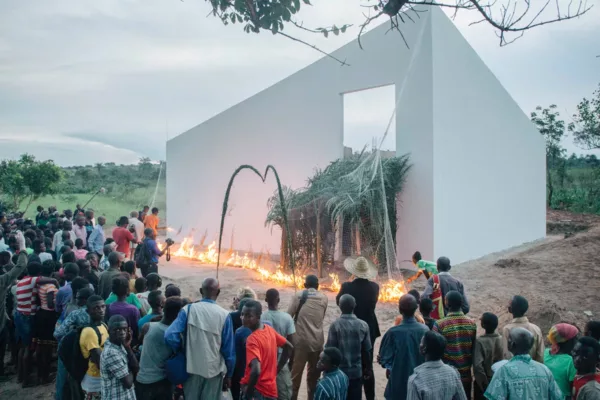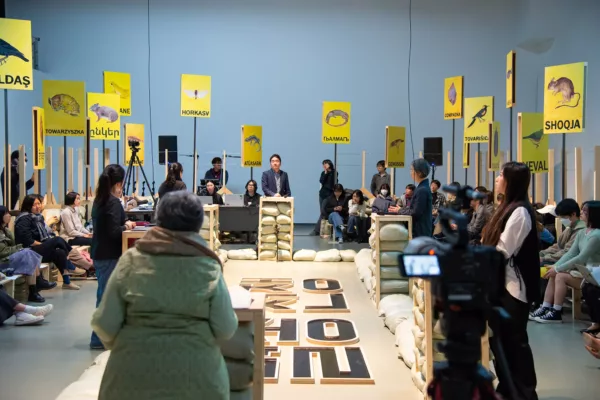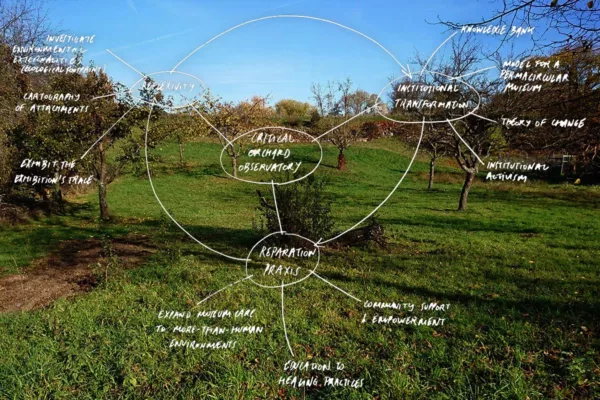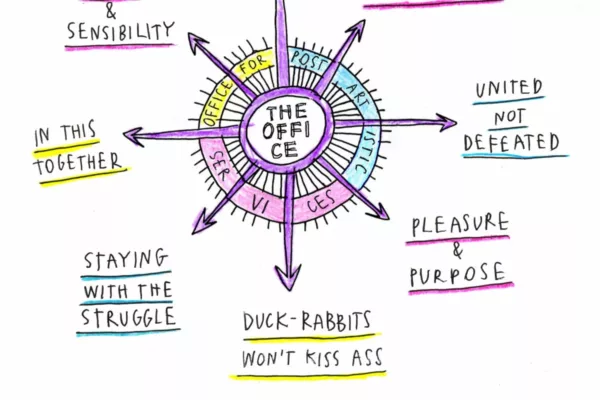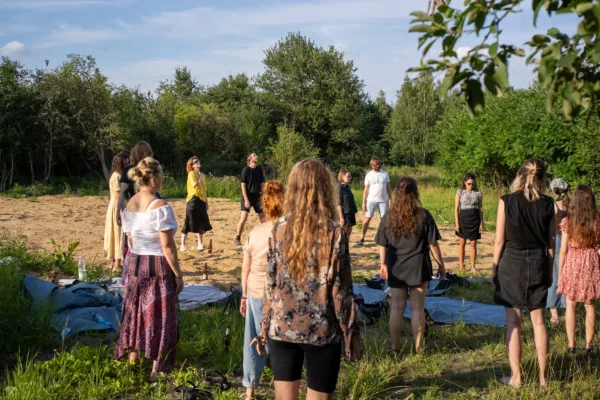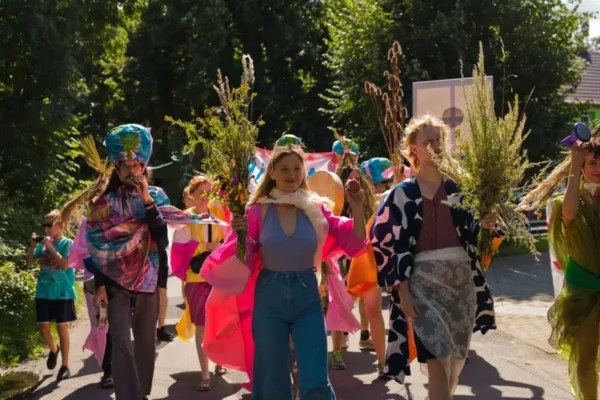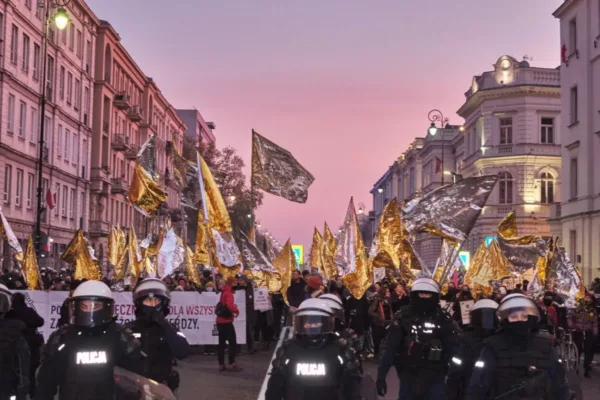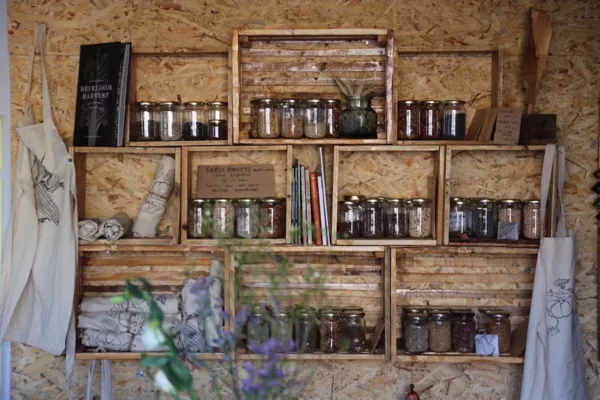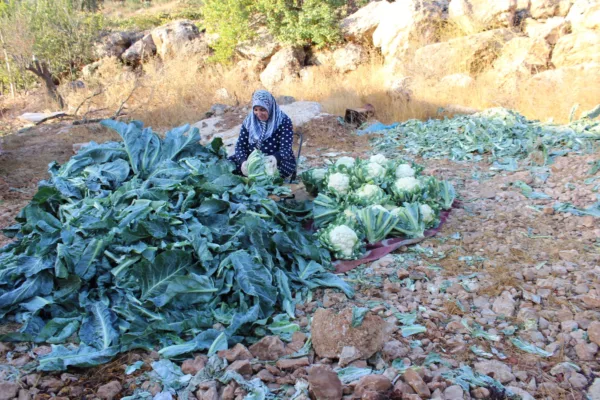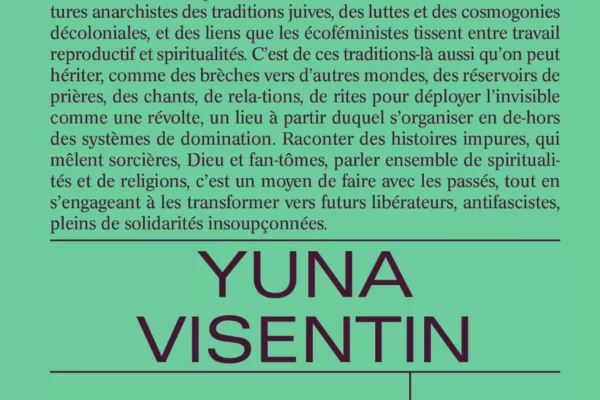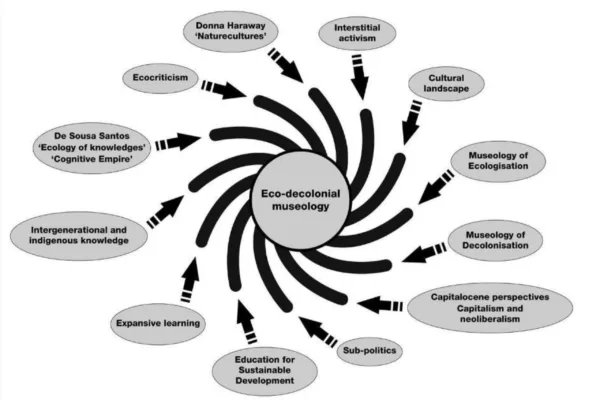Wednesday, March 5, 2025 – 4pm-7pm
Post-artistic ecologies
Lecture series, 2025
Where: maison des arts de Malakoff : center d’art contemporain de Malakoff
When: March & April 2025
The cycle is already sold out, the video recordings will be published online by June 2025.
In the light of global climate change and this cosmological shift, the notion of the art institution is in urgent need of a complete overhaul. In recent years, there has been a proliferation of initiatives aimed at greening institutions and turning art space into a general rehearsal for an earthly shift, from the eco-assemblageist turn in art to museum permacircularity, from critical eco-pedagogy to the radical spirituality of eco-feminism, while broader calls to fork out or desert have intensified. What are the contours of this shift and of practices that, on the one hand, owe their condition of possibility and use to art “without necessarily belonging to it” - what we call “post-artistic” - and that, on the other, tend to make institutions and museums bifurcate as a function, in opposition to a museum necropolitics and a fossil aesthetics?
Artistic farms & social fermentations
Forking the edges of artistic institutions today invites us to make them flee from models of institutional counter-practice, such as the artistic farm.
With
Léa Muller, artist (in person)
Vivien Sansour, artist, storyteller, researcher, founder of the Palestine Heirloom Seed Library (remote)
Kathrin Böhm, artist, co-founder of Myvillages (remote)
With simultaneous translation into French
Wednesday, March 12, 2025 – 4pm-7pm
Eco-democracies
Whether through neo-constitutionalist processes in which constituent assemblies have granted legal rights to Mother Earth, or through the theoretical proposition of enlarging parliaments to include representation of non-humans, there are many gestures that seek to give representation to the living. The eco-assemblyist turn in art, for its part, offers a testing, adjusting and readjusting stage for future forms of eco-democracy.
With
Jonas Staal, artist (remote)
Wednesday, March 19, 2025 – 4pm-7pm
Permacircular museums
Could we reimagine art institutions from a program of eco-decolonial museology, on the one hand, and permacircularity, on the other, that seeks to shift the museum tropism of “conservation” to a program more in tune with the ongoing extinction of the living world?
With
Stéphane Verlet-Bottéro, artist and curator (in person)
Thomas Jeffery, curator, philosopher (remote)
With simultaneous translation into French
Wednesday, March 26, 2025 – 4pm-7pm
Post-artistic institutions
What would be the possible forms of these future institutions, or rather post-institutions, whose workings would be “as foreign to contemporary art as contemporary art and its institutions are to those of the Renaissance”?
With
Stephen Wright, art theorist, codirector of the Künstlerhaus Stuttgart (in person)
Marianna Dobkowska, artistic director of Ujazdowski Castle Warsaw, funding member of the Office for Postartistic Services (remote)
With simultaneous translation into French
Wednesday, April 2, 2025 – 4pm-7pm
Post-plantation & Fossil Free Culture
Artist and researcher Imani Jacqueline Brown draws attention to the entanglement of art and culture with fossil fuel philanthropy as one manifestation of the “continuum of extractivism,” an exploitative cosmological system imposed by colonial joint stock companies and inherited by fossil fuel multinationals. How then to initiate a culture liberated from fossil fuels and the white cube as “trompe l’oeil – a supposedly inclusive place incapable of really taking on the private apparatus of art support”?
With
Renzo Martens, artist (remote)
Imani Jacqueline Brown, artist, activist and researcher (remote)
With simultaneous translation into French
Saturday, April 12, 2025 – 4pm-7pm
Ecofeminist spiritualities & post-secular rituals
Ecofeminist spiritualities, cosmogonies and decolonial struggles seek to think what it means to decolonize the invisible, after centuries of secularization. Impure stories that mix witches, underground dragons, goddesses, ghosts, energies, spirits and invisible worlds.
With
Yuna Visentin, author (in person)
Mohamed Amer Meziane, philosopher (remote)
Saodat Ismailova, filmmaker (in person)
In contrast to those who would reassert the uselessness of art as a last bulwark against the capitalist takeover of everything that can take shape, artistic practice and institutional projects here are best seen in concert with the broader program of repeating the preparatory gestures for an earthly shift. Art centers and museums, as liminal spaces between what is and what could be, are powerful weapons in this respect. This unstable character already allows us to compose, correct, go back, fork out, experiment with hypotheses and compose the worlds we wish to see realized.
Nevertheless, the forms of today’s art institutions seem perfectly unsuited to the development of these practices. Documenta fifteen (2022), an edition that was able to support a translocal model of art based on multiple social and community-based initiatives from the global south, thus deactivating the idea of the exhibition as a destination for art, marked both a major break in the existing art ecosystem and confirmed the incompatibility between the forms of existing institutions and the place of art.
Canadian art theorist Stephen Wright anticipated this as early as 2001, describing this incompatibility as “deceptual art”1: a way of presenting art in a deactivated way, torn from the context and process that gave it its meaning, becoming an “involuntary” form of conceptual art. What would be the possible forms of these institutions to come, or rather of these post-institutions, given that they would not have to respond to the pre-existing contours of the term from which they would emanate, how could the museum be forked as a “function”2? The workings of these new institutions, as curator Grégory Castéra again identifies, are bound to become “as foreign to contemporary art as contemporary art and its institutions are to those of the Renaissance”3. Several avenues are now open to us in thinking about the contours of perma-circular museums (Stéphane V. Bottéro) and ecodecolonial museology (Thomas Jeffery).
With this term post-artistic, we intend here to link up with that tradition associated with the Polish theorist Jerzy Ludwiński, who meant, by this term, not a prediction of the fall of art as we know it, but rather a reference to those moments when art expands into politics, agriculture, economics and the social sciences. More contemporarily, art theorist Stephen Wright, taking up this legacy, postulates a vast field of practices that “owe their conditions of possibility and use to art, but are not necessarily art”, a vast field of practices that, for the institutions of art, are not art, except insofar as these same institutions might recognize that they are not not art (it’s not not art). These post-artistic practices could be envisaged on the model of permaculture: contemporary art becomes compost, it decomposes but becomes “a kind of ingredient, composing, in a series of skills, energy, history, narrative, references, inferences”4, while these ingredients, these components, these histories, these techniques, are the humus of societal forms to come.
At a time when artists are bifurcating, deserting, marooning or suspending, this lecture series investigates the contours of post-artistic ecologies as much as it seeks possible paths for a new kind of possible institution.
Aliocha Imhoff & Kantuta Quirós
Biolines
Léa Muller was born in Strasbourg in 1987. She lives in Bourg-des-Comptes and works in Saint-Jacques-de-la-Lande. Léa Muller takes a fresh look at the land around her and develops tools for appropriating and reading the landscape. With conviction, she forges a position on the way we shape our territories: develop less and understand better, build with an acute concern for pre-existing features and resources, develop a sensitivity for ordinary landscapes, pay attention to living things, conceive the landscape as the concrete and visible materialization of our relationship with the world. Léa Muller is developing a project for soft forestry and direct processing on her forest plots in Bourg-des-Comptes ((35)), with the aim of anchoring and transforming a model of society.
Vivien Sansour is an artist, researcher, and writer. She uses installations, images, sketches, film, soil, seeds, and plants to enliven old cultural tales in contemporary presentations and to advocate for seed conservation and the protection of agrobiodiversity as a cultural/political act. Vivien founded the Palestine Heirloom Seed Library in 2014, where she works with farmers in Palestine and around the world to preserve ancestral seeds and biocultural knowledge. Her work as an artist, scholar, and writer has been showcased internationally. Vivien was most recently the Distinguished Artistic Fellow in Experimental Humanities at Bard College, and is currently the Executive Director of the Palestine Heirloom Seed Library.
Myvillages was set up as an artist-led collective in 2003 to challenge the cultural dominance of the urban by paying attention to the rural. For the last twenty years, Myvillages has been connecting communities, individuals, and spaces using the non-national and trans-local identifier of “the rural,” which can be a mindset, a certain practice, or a shared identity. How can we use the term to de-urbanize art and break with traditional modes of the urban gaze? We see our work in line with anti-oppression feminist practices, disrupting European traditions of urban cultural hegemony and the dominance of patriarchal landownership, exploring rural realities in different constellations and at different intersections, creating common space for localized and land-based knowledges, and (re)connecting skills along the way. Through trans-local collaborations, Myvillages fosters a new dynamism in understanding and engaging with the rural, not as a nostalgia or remote backdrop but as an active cultural ground for artistic operation and critical inquiry. The work makes space for a multivocal rurality, whether it takes place in a book, a village, long-term infrastructures or an exhibition. For instance, the International Village Shop (2006–ongoing) sells goods within and outside of Europe, and rural mindsets are rooted and uprooted in works like Former Farmland (2007–9), Vorratskammer/Pantry (2010–11), Company Drinks (2014–ongoing), and the Rural School of Economics (2020–ongoing). The rural has a strong but mainly unseen presence within cities. During documenta fifteen, Rural Undercurrents (2022) in Kassel recognized the potential of rural knowledge for collective action. We work with rural communities, migrants, and interest groups; the work is always collaborative and coproduced, everyone is a learner and teacher. In 2017, we made a Myvillages wallpaper that listed all the rural communities we’d worked with. Myvillages self-published Learn to Act (2017) and Rural Life in Hamar, Ethiopia (2022), and we edited The Rural (2019) for Whitechapel Gallery. Since 2007, Jap Sam Books has been our publishing partner. Myvillages has exhibited internationally at Kunsthalle Bratislava, Guangdong Times Museum, Galerie für Zeitgenossische Kunst Leipzig, and Van Abbemuseum in Eindhoven, to name a few venues.
Jonas Staal is a visual artist whose work deals with the relation between art, democracy, and propaganda. He is the founder of the artistic and political organization New World Summit (2012–ongoing). Together with Florian Malzacher he co-directs the training camp Training for the Future (2018-ongoing), and with human rights lawyer Jan Fermon he initiated the collective action lawsuit Collectivize Facebook (2020-ongoing). With writer and lawyer Radha D’Souza he founded the Court for Intergenerational Climate Crimes (2021-ongoing) and with Laure Prouvost he is co-administrator of the Obscure Union.
Exhibition-projects include Museum as Parliament (with the Democratic Self-Administration of Rojava, Van Abbemuseum, Eindhoven, 2018-ongoing), We Demand a Million More Years (Fondazione Sandretto Re Rebaudengo, Turin, 2022), Extinction Wars (with Radha D’Souza, Gwangju Museum of Art, 2023) and Propaganda Station (Museum of Contemporary Art, Zagreb, 2024). His projects have been exhibited widely at venues such as the Cooper Hewitt Smithsonian Design Museum in New York, V&A in London, Stedelijk Museum in Amsterdam, M_HKA in Antwerp, Centre Pompidou-Metz and the Nam June Paik Art Center in Seoul, as well as the 7th Berlin Biennale, the 31st São Paulo Biennale, the 12th Taipei Biennale and the 14th Shanghai Biennale. Publications include Propaganda Art in the 21st Century (The MIT Press, 2019) and Climate Propagandas: Stories of Extinction and Regeneration (The MIT Press, 2024). Staal completed his PhD research on propaganda art at the PhDArts program of Leiden University, the Netherlands.
Stéphane V. Bottéro is an artist and sometimes curator working at the intersection of social practice, installation, writing, and gardening. With a background in environmental science, he is interested in the entanglements of community, materiality, body and place. Based on site-specific research and durational interventions, his practice explores pedagogies of repairing. He co-initiated the collaborative platform School of Mutants in Dakar in 2018. His work has been exhibited at biennales, museums, and festivals, including: ZKM, Karlsruhe; 4th Autostrada Biennale; Centre Pompidou Metz; 12th Berlin Biennale; 14th Dakar Biennale; RAW Material Company, Dakar; 12th Taipei Biennial; 7th Oslo Triennale; Le Lieu Unique, Nantes; Het Nieuwe Instituut, Rotterdam; Sheffield DocFest.
Thomas Jeffery is Principal Curator at Amazwi South African Museum of Literature. He holds a PhD (Education) with a focus on museology. His research explores the decolonisation of museums in a time of social-ecological crisis. He favours an eco-decolonial approach to museology that is grounded in the understanding that social and ecological justice are entangled. This is a perspective that emerges from resonances between decolonial museology and literary postcolonial ecocriticism, among other fields of enquiry.
Stephen Wright is an art theorist. His writings have focused primarily on the politics of use, particularly in the contexts of collaborative and extradisciplinary practices with variable art coefficients. His research aims to understand the ongoing usological turn in art and society in terms of contemporary escapological theory and practice. In 2004, he organized The Future of the Reciprocal Readymade (Apexart, New York), in 2005 In Absentia (Passerelle, Brest), in 2006 Rumour as Media (Aksanat, Istanbul) and Dataesthetics (WHW, Zagreb). He is the founding user of the collective blog n.e.w.s., northeastwestsouth.net. He has taught at the EESI (England) and recently joined Tamarind Rossetti as director of the Künstlerhaus art center in Stuttgart.
Marianna Dobkowska is a curator and art historian. She is a founding member of the Office for Postartistic Services. Since August 2024, she holds the position of Artistic Director of Ujazdowski Castle Centre for Contemporary Art in Warsaw. She is using curatorial practice for building relations and fostering situations (often based on long-term and international collaborations) bringing together practices from the fields of visual and performing arts, education, and activism. Her selected curatorial works include Re-Directing: East seminars (2011–2020), exhibition at the National Gallery of Indonesia in Jakarta Social Design for Social Living (2016), exhibition-meeting Gotong Royong. Things We Do Together (2017–2018). She’s an editor of Things We Do Together. Post-reader (Mousse Publishing and Ujazdowski Castle, 2020). Together with Sebastian Cichocki, Bogna Stefańska and Jakub Depczyński she curated Konteksty. Postartistic Congress (2021) and Postartistic Soft Seminar (2023) in Sokołowsko, Poland (2021). In 2023 she curated together with Sebastian Cichocki Postartistic Assembly—Polish Pavilion at Gwangju Biennale. She lives and works in Warsaw.
Renzo Martens is a Dutch artist who lives and works between Amsterdam and Kinshasa. Renzo Martens studied political science and art. He gained international recognition with the films Episode I, and Episode III: Enjoy Poverty, which were shown in over 23 countries and question his relationship with images of war and poverty. In 2012, Renzo Martens founded the Institute for Human Activities in the Congo, a research project aimed at demonstrating that art that criticizes global inequalities can help overcome them. Not on a symbolic level, but on a material one. Together with the Institute, the Cercle d’Art des Travailleurs de Plantation Congolaises (CATPC) near Lusanga in the south of the Democratic Republic of Congo is developing a local platform for the development of new economic initiatives based on the production and sale of critical art aimed at improving the economic position of its members and their community. On a former Unilever palm oil plantation, they are opening an iconic White Cube, designed by OMA. With the construction of the White Cube, the mechanisms by which plantations support the art world are reversed. Benefiting from the privileges associated with the art world, the White Cube attracts the capital and visibility needed to invent a new ecological and economic model locally in Lusanga. CATPC members create clay sculptures, which are then 3D scanned and reproduced in Amsterdam in chocolate and palm oil, before being exhibited in galleries and museums, with sales gradually helping to buy back the land from Unilever. To date, they have been able to buy back 85 hectares of land, which they are transforming into rich, diverse, ecological and egalitarian spaces: post-plantation.
Imani Jacqueline Brown is an artist, activist, and architectural researcher from New Orleans, based in London. Her work investigates the “continuum of extractivism,” which spans from settler-colonial genocide and slavery to fossil fuel production and climate change.
In exposing the layers of violence and resistance that form the foundations of settler-colonial society, she opens space to imagine paths to ecological reparations.
Yuna Visentin is a former student at the École normale supérieure, associate professor of literature, and author and facilitator of feminist writing workshops. After several years teaching and researching the relationship between literature and Jewish philosophy, she published a novel and an essay on the reproduction of systemic oppression in schools. She published her third book in 2024, Spiritualités radicales. Rites and traditions to repair the world, published by Editions Divergences. In this essay, prefaced by Myriam Bahaffou, she examines the emancipatory political reconfigurations that relationships with the invisible can make possible, exploring in particular her experience of the Jewish tradition. She continues her independent research, focusing in particular on Jewish radical and anarchist traditions, Jewish feminisms, ecofeminist and decolonial thought and struggles – and everything that circulates between these worlds.
Mohamed Amer Meziane is a philosopher and performer. He holds a Phd from the Sorbonne, taught at Columbia University and is now a professor at Brown University. Author of Des empires sous la terre (La Découverte, 2021) and The States of the Earth: An Ecological and Racial History of Secularization (Verso, 2024), as well as numerous articles, he is also a member of the editorial board of Multitudes review.
Saodat Ismailova is an Uzbek filmmaker and artist. Interweaving myths, rituality, and dreams, her films investigate the historically complex and layered culture of Central Asia which stand at the crossroads of material histories and migratory legacies. Departing from her personal history marked by growing up in the post-Soviet Uzbekistan, Ismailova reaches out to the collective dimension of memory. Her research encompasses the region’s ancestral knowledge and traditional spiritual practices as well as modern history of Uzbekistan which manifests through work on archival footage. She initiated Davra research collective in Central Asia, 2021 and participated, the following year, to the Biennale of Venice and documenta fifteen. She also received The Eye Art & Film Prize, Amsterdam.
Partners
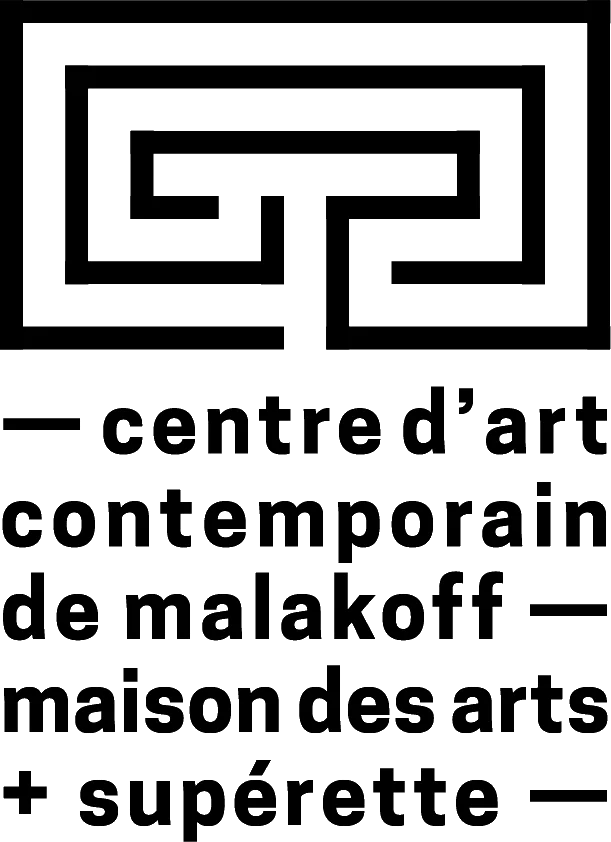
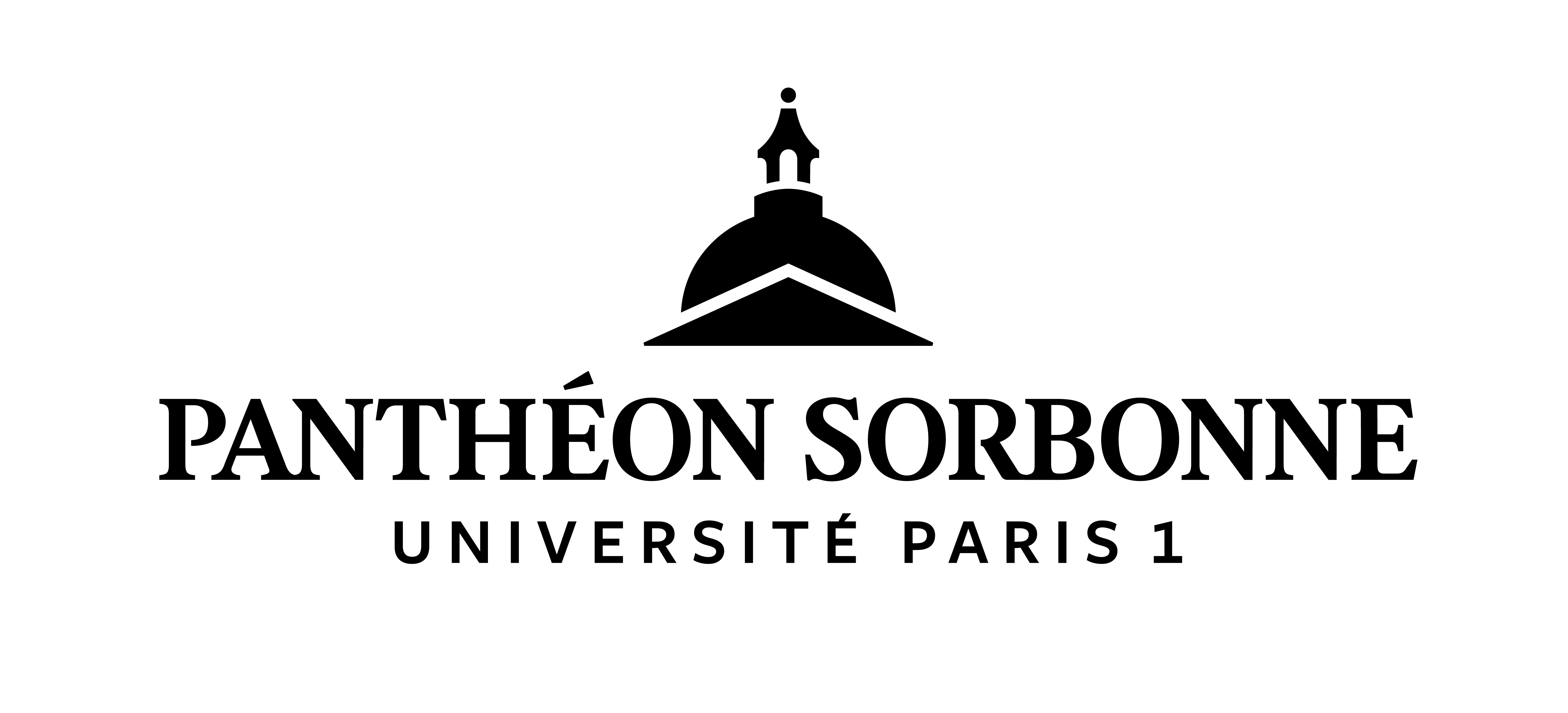
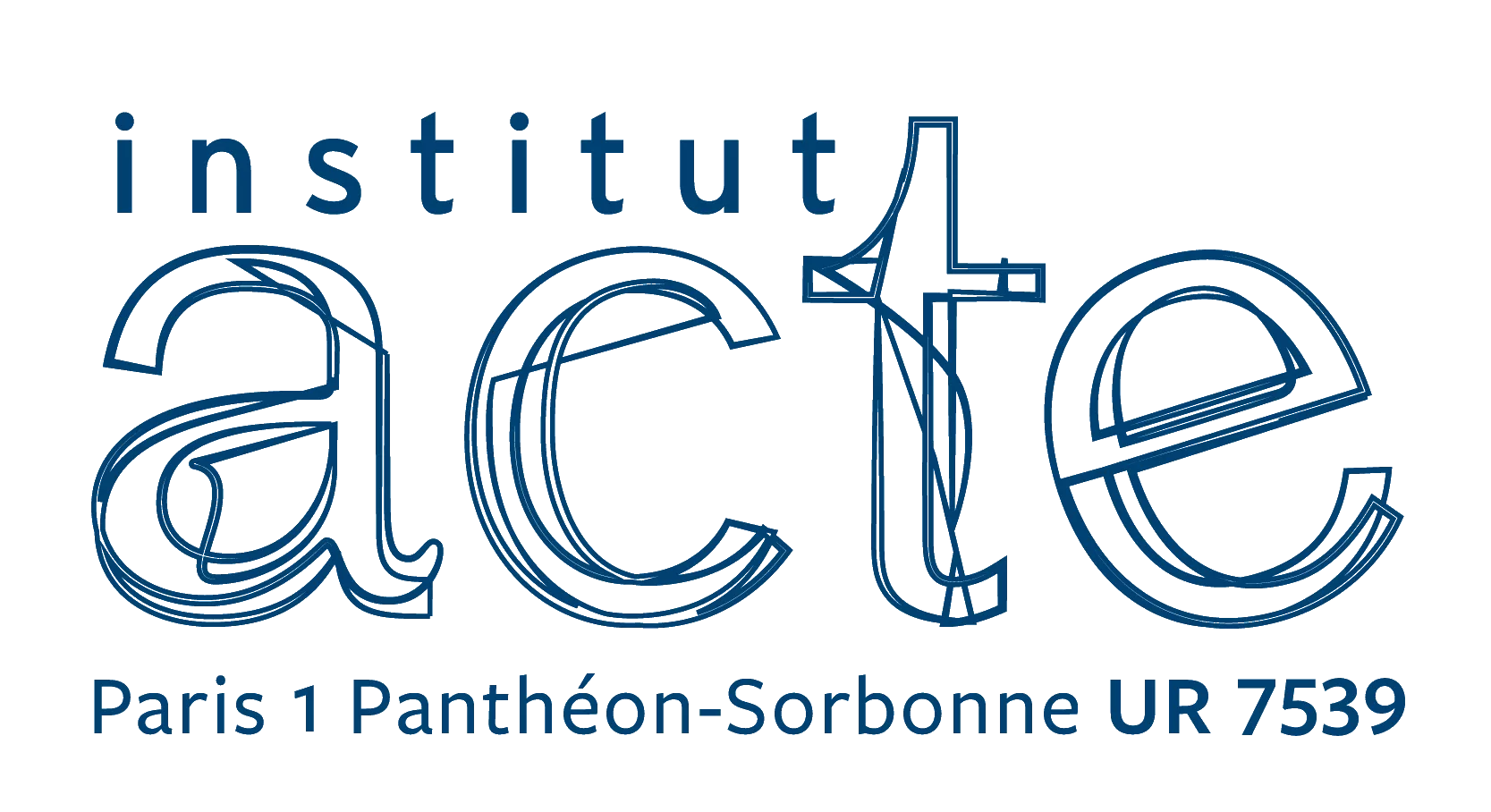
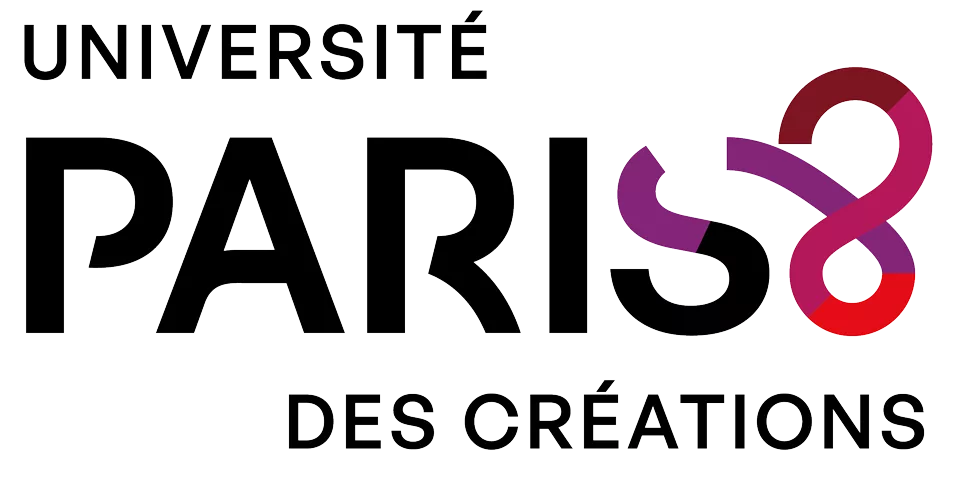

Thanks
The Maison des Arts de Malakoff team (Aude Cartier, Julie Esmaeelipour, Léa Djurado, Frederic Courtois), the Université Paris I Panthéon-Sorbonne (Diane Watteau, Benjamin Brou, Christophe Viart, Lydie Delahaye, Riccardo Venturi, Chiara Palermo, Ingrid Luquet-Gad, Naila Fakhfakh), the Université Paris VIII (Raphaëlle de Sousa, Thomas Levasseur) and the AIAC laboratory/TEAMeD team.
Simultaneous translation is provided by Yves Tixier, Marguerite Capelle and Caroline Ferrard.
Footnotes
- Stephen Wright, “Le dés-œuvrement de l’art” [online], Mouvements, La Découverte, 2001, vol. 17, no. 4, pp. 9-13
- Daniel Buren, “Fonction du musée”, in catalog Sanction of the Museum, Oxford, Museum of Modern Art, 1973
- Grégory Castéra, “Of Attentional Environments (The Pearl Necklace)”, in Philipp Dietachmair, Pascal Gielen, Georgia Nicolau (eds.), Sensing Earth: Cultural Quests Across a Heated Globe, 2023 (our translation)
- Stephen Wright, “Deactivating the aesthetic function of art”, lecture at Graphic Research School, 2022
